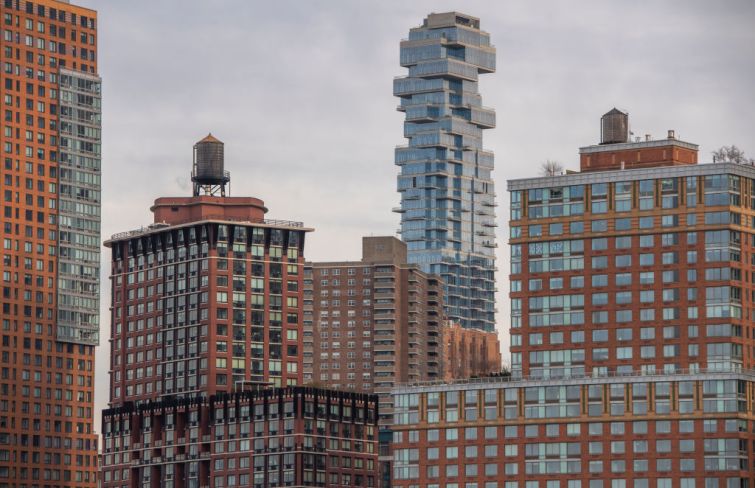How Investors Can Capitalize on New York’s Multifamily Market Now
By Lev Mavashev March 9, 2023 12:00 pm
reprints
A perfect storm of economic headwinds is creating opportunities for New York City multifamily investors. With interest rate increases subsiding and now somewhat stable, 2023 will be a great entry point into the market — probably the best we’ve seen in the past three years. For rent-stabilized buildings, which represent about 45 percent of New York City’s housing stock, current pricing seems to be at an even better entry point. It’s the lowest in over a decade.
Still reeling from the COVID-19 tumult that emptied the city, froze rents and led to emergency rent protections, rent-stabilized property owners entered 2023 with the deck stacked against them. Rising interest rates, spiraling costs for rate-cap hedges, and rigid regulations that leave no wiggle room for rent increases now have many on the brink of selling to avoid a cash-in refinance or foreclosure.
For investors with patient capital and a taste for calculated risk, however, now is the time to play your hand before the crowd returns to the rent-regulated apartment market.

Pricing in the sector has already fallen in some areas by as much as 50 percent since 2019, when state law changes made it more difficult to raise rents following improvements. Right now, we are remarketing a 103-unit rent-stabilized property that was attracting offers in excess of 17 times the rent roll pre-2019. Now it’s 10 times the rent roll (the original deal fell apart due to the passage of the rent laws in June 2019). That kind of discount will undoubtedly attract more investors with a tried and tested business plan of buying cheap and holding long.
At this stage in the market cycle, these types of deals are speculative and transactions have slowed to a crawl as the cost of capital has given institutional investors in particular pause.
However, there are a number of indicators that point to tremendous opportunity for buyers coming back into this distressed situation, particularly those with discretionary capital looking to acquire good-quality assets at an attractive basis to tuck into their existing portfolios.
Local private investors and deep-
pocketed family offices are best positioned to take advantage of the elevated interest rate environment because they don’t need to borrow 70 to 80 percent of the deal. With less debt and a larger equity investment — and the patience to wait for the type of modest but steady return these types of assets promise — those investors are in a win-win situation as the city grapples with its worst affordable housing shortage in decades.
The city’s regulatory environment has crippled transactional volume for rent-
stabilized buildings in recent years, but there is now renewed effort to rewrite at least some of the rules in an effort to resuscitate the market and create more housing. New York City now has more official residents than before the pandemic.
The 2019 rent laws have resulted in the warehousing of nearly 40,000 apartments. The end of the J-51 tax abatement, which rewards improvements, has led to a major decline in the quality and maintenance of rent-stabilized units, and outdated zoning is crippling the city’s ability to create new and better communities. Gov. Kathy Hochul and Mayor Eric Adams have introduced sweeping proposals to change the landscape. Meanwhile, the Biden administration has proposed a housing plan offering national incentives such as cheaper and easier affordable housing financing options.
Shrewd investors who bet on one of those proposals — or even a one-time reset — stand to reap the rewards of buying low and sitting tight. Take a package we are currently marketing of 120 units, 28 of which are warehoused vacant apartments. A one-time rent reset alone would create instant upside for any buyer.
Despite economic downturns, New York City’s economy remains strong. Coupled with the rising population, the metrics are a measure of the stability New York offers and that multifamily investors seek from predictable rental income.
We anticipate that more opportunistic buyers will start to enter the market in the second half of this year as prices continue to fall. That influx of buyers will cause cap rates to compress, despite the higher interest rate environment. We all agree that cap rates rose last year. However, while it may be a contrarian opinion, cap rates seem to correlate with the number of buyers in the market — not interest rates.
Right now, competition is scarce even as more sellers become motivated to dispose of assets. But, as interest rates settle into a holding pattern and legislators look to ease regulatory burdens, the rent-stabilized apartment market will shift significantly. Astute investors should move quickly to cash in on this once-in-a-lifetime opportunity for a perfect buying point into the New York City multifamily market.
Lev Mavashev is a principal at Alpha Realty.


